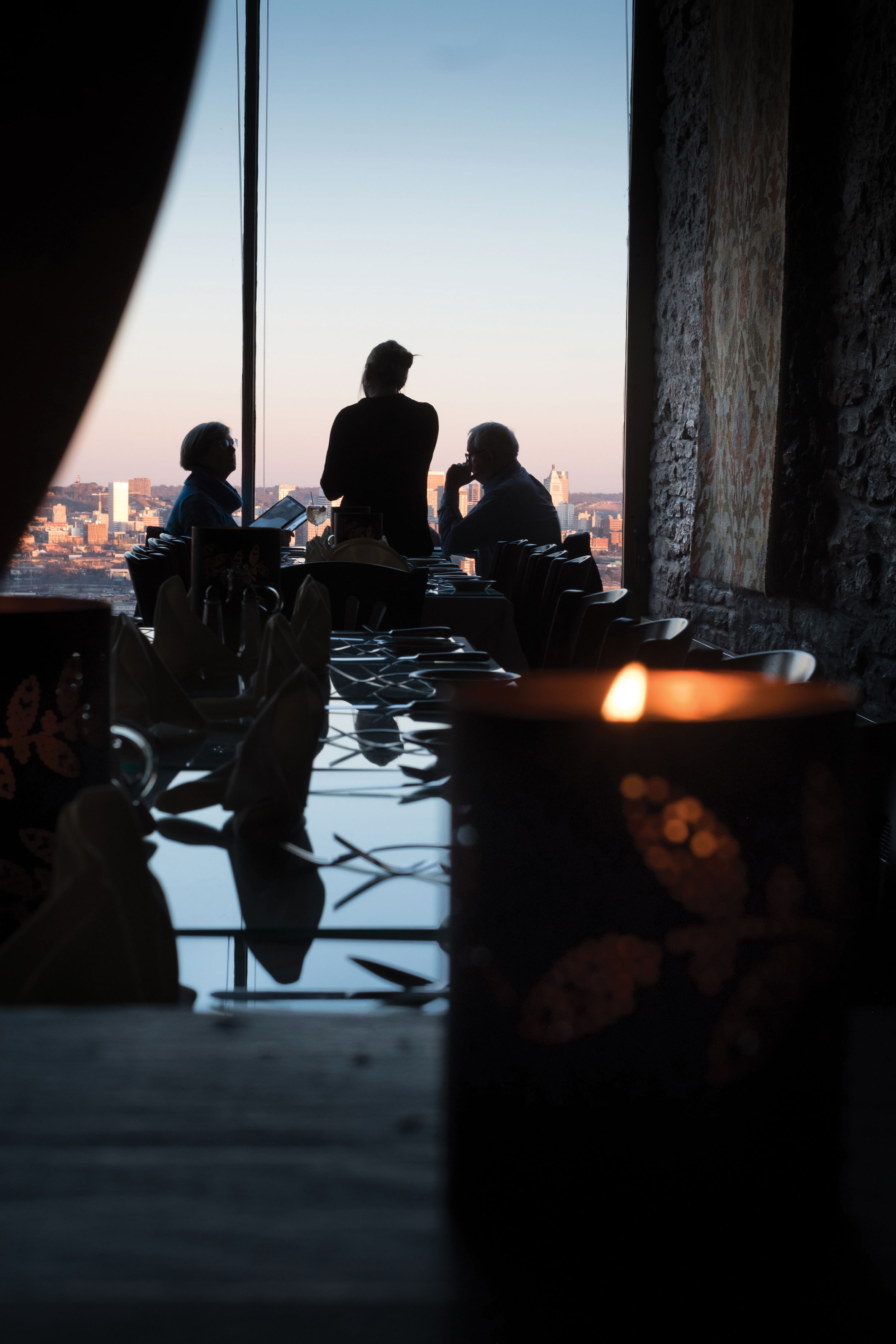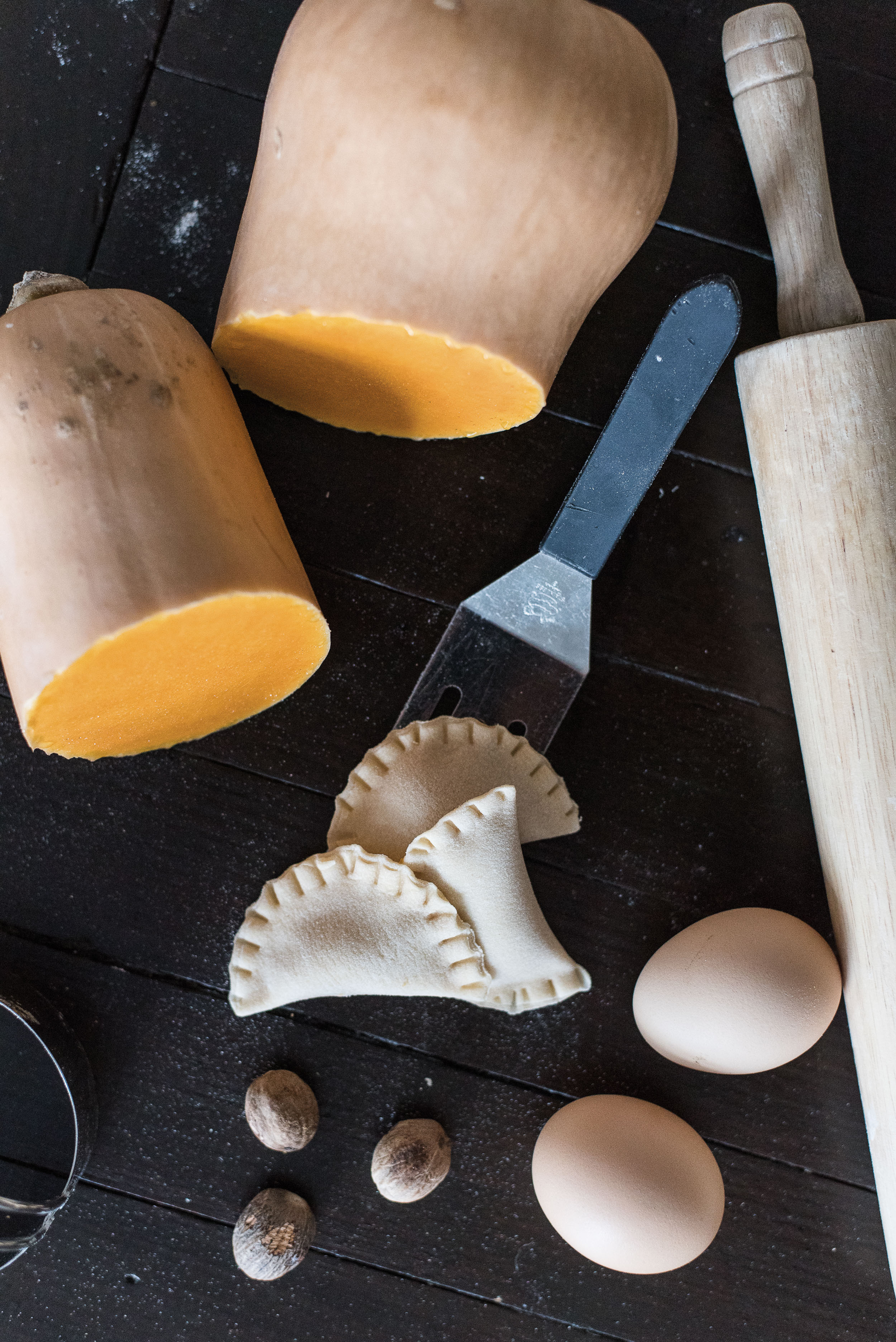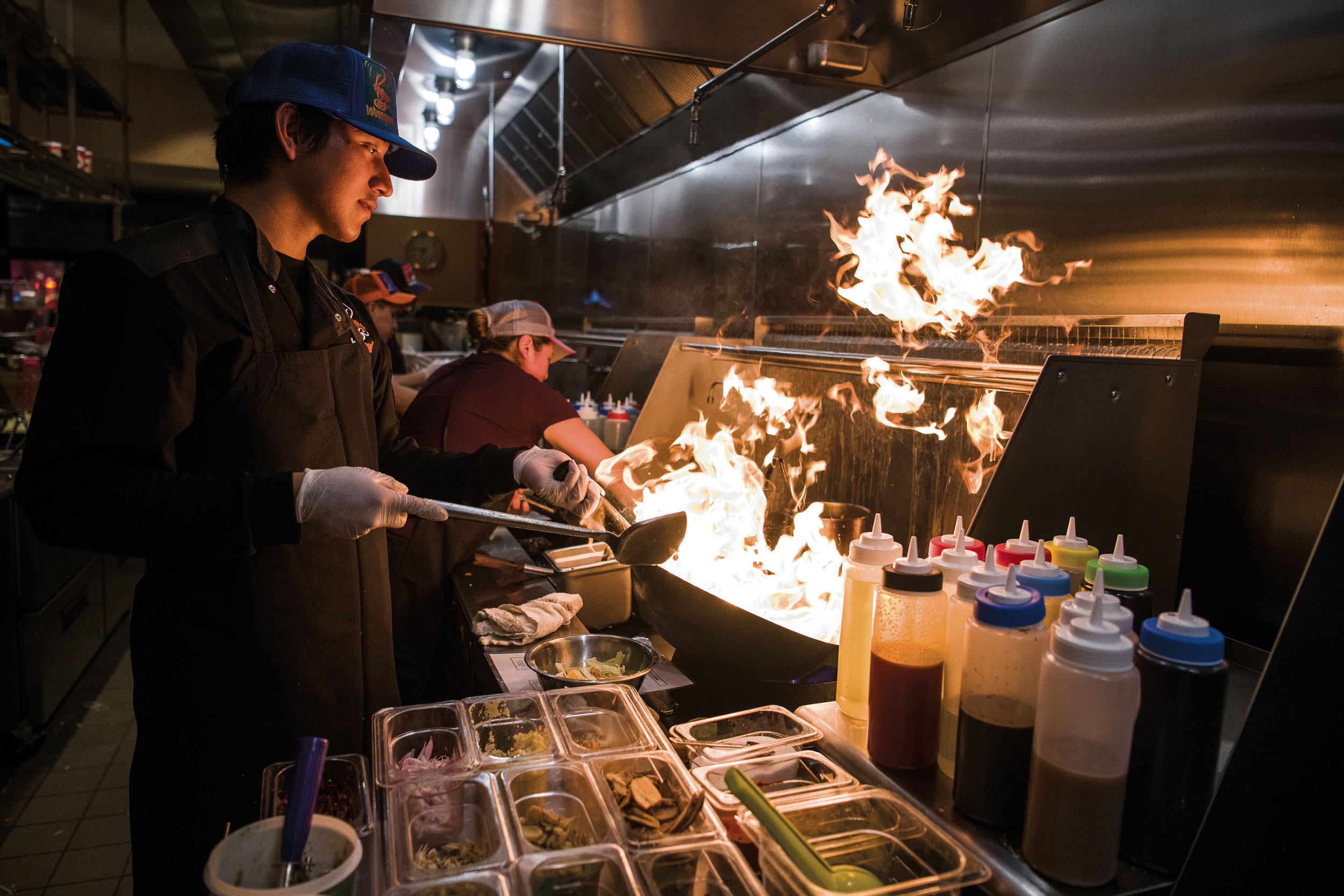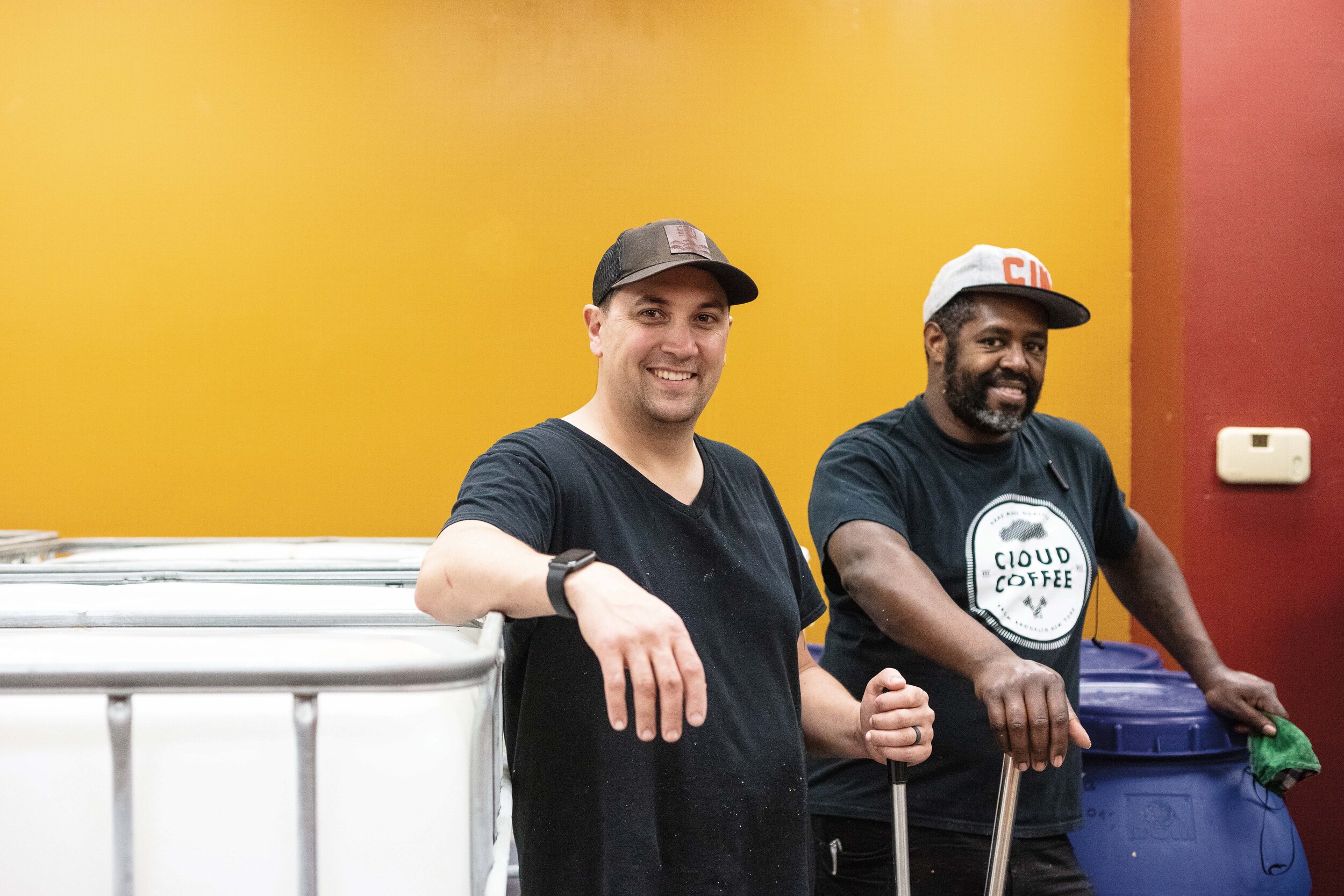Price Hill
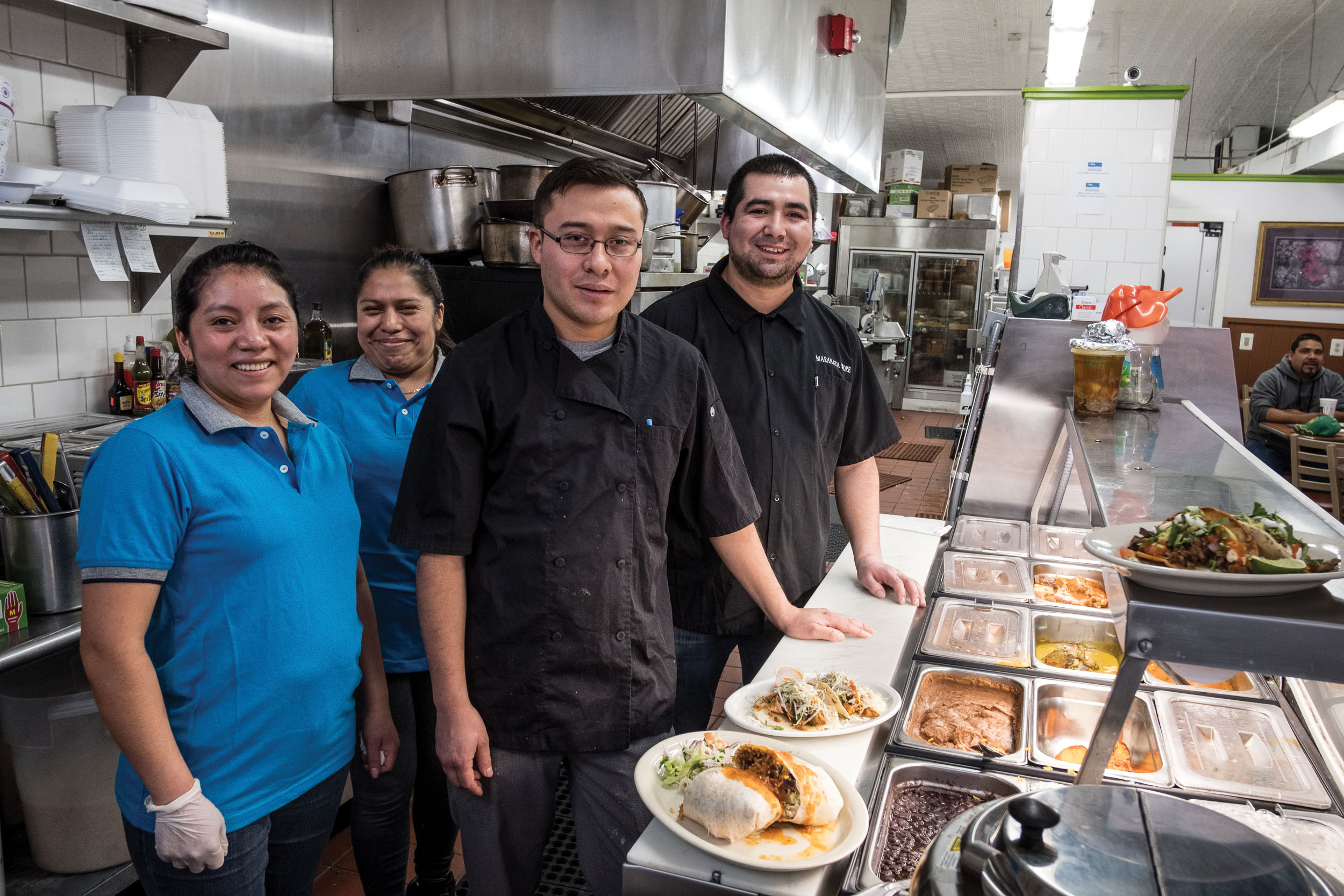
Cincinnati, Ohio
East-west “rivalries” aside—since they’re mostly of the good-natured sports variety, anyhow—Cincinnati has long been enchanted with its western fringes. And for good reason: Much of the city’s history began in neighborhoods like Queensgate, home to iconic Union Terminal and, at one time, the hog-slaughtering plants that earned our abiding “Porkopolis” nickname.
Just beyond that western edge lies Price Hill: beleaguered, beautiful, fierce, fragile, complex, and altogether enchanting in its own right. One of Cincinnati’s oldest neighborhoods, Price Hill is divided—more than geographically, many residents say—into Lower, East, and West.
The community’s sweeping views of the Ohio River Valley are arguably the best in the city. Longtime white-tablecloth restaurant Primavista and the newer Incline Public House take full advantage, serving upscale Italian and bistro fare, respectively, with a side of breathtaking year-round scenery.
A few blocks over, a different kind of food scene is unfolding across Price Hill’s scrappy central business district. It’s rooted in the creative-community havens of Warsaw Project Gallery, Cincy Stories, civic organization Price Hill Will, and BLOC Coffee Company—an uphill extension of the last decade’s citywide urban renewal. Founded in 2007 on Price Avenue, BLOC will soon occupy a larger space on nearby Mt. Hope Avenue, where it will continue serving seasonal breakfast dishes and overnight oats amid thoughtfully curated, decidedly unstuffy works of local art.
Community gardening programs have spawned more than 40 residential plots in Price Hill, as well as a 20-tree orchard. In East Price Hill, the Enright Ridge Eco-Village (a small neighborhood of residents committed to sustainable living) operates a 40-member community supported agriculture program through its nonprofit Urban Earth Farms. The produce goes to participants’ homes and local food pantries, while remainders are integrated into healthy cooking classes at Cooking for the Family, Good Sam Free Health Clinic, and Price Hill rec center.
This community-minded food sharing spills over into smaller projects like the “public pantries”—funky, repurposed newspaper stands—that dot street corners throughout Price Hill, offering free nonperishable goods. Residents take a little, and they leave a little.
“Food expresses community and culture in a visceral way. It’s like being able to feel, taste, and touch a place,” says Price Hill Will’s Chris Smythe, whose personal Price Hill favorite is Maranata Store, a Guatemalan restaurant on Rulison Avenue. “For good placemaking, you want to see food options express that local culture. In Price Hill, we have a great mix of longtime food options as well as several new ones being supported by neighbors.”
And while the neighborhoods that make up Price Hill might not have the same views—literally or figuratively—they share a vision for the community that can accommodate a rising influx of empty-nesters, creative professionals, and young families. These incoming residents and long-timers share that intangible pioneer spirit in purposefully blurred lines between food and art, public and private, yours and mine. It’s purely Cincinnati, and it’s what differentiates Price Hill from its neighbors just a few miles away.
Price Hill
PriceHillWill.org
EastPriceHill.org
Hannah is a graduate of NKU's political science program and a freelance creative who writes extensively about development in Greater Cincinnati. She doesn't like to fly, but she loves to travel. Her favorite books are A Tree Grows in Brooklyn and Love in the Time of Cholera.





